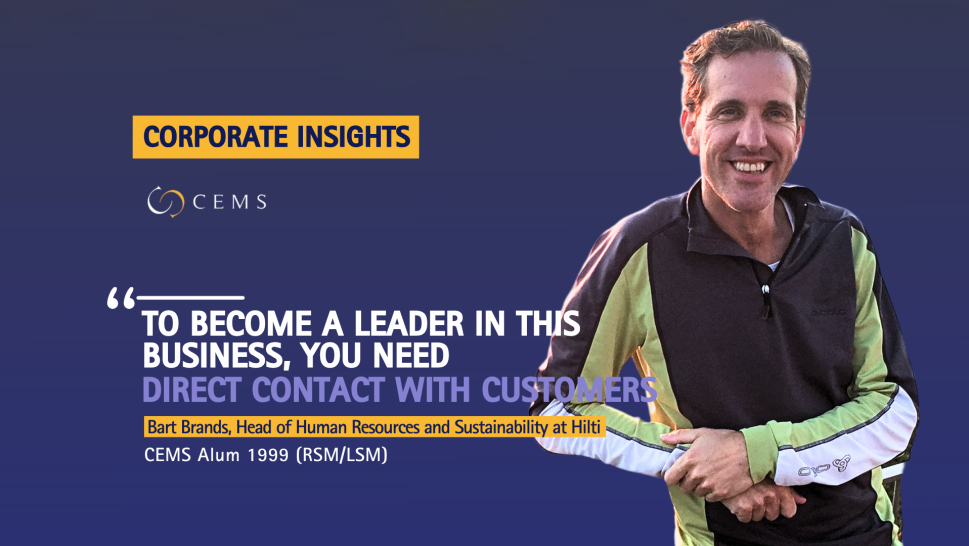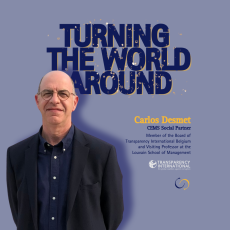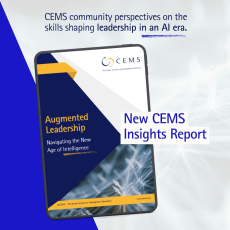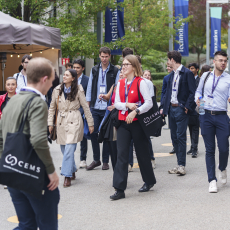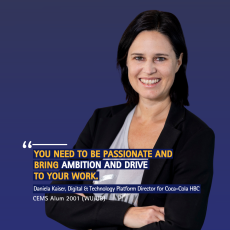Bart Brands is Head of Human Resources and Sustainability with Hilti Nederland BV, the industrials giant’s Dutch business. It’s a role in which he has critical oversight for the company’s dynamic expansion in the region, including a rapidly-growing international team and a global BIM (Building Information Modeling) Competence Centre—a new initiative that sees Hilti leverage computer modelling systems to simulate construction and test virtually for key installation elements like heating, ventilation, electricity and water before progressing to the physical build.
Bart is four years into this role, though he is something of a Hilti veteran, having first joined the company in 1999. His own career path within the organisation, however has been anything but linear. He’s held various key roles in sales and even a five-year hiatus outside of Hilti, working in consulting and project management – a move he describes as essential for stepping out of his comfort zone and gaining new perspective. Yet, since his time at CEMS, Hilti has remained a red thread in his professional life.
“Hilti just clicked with me from the first contact when I was graduating and thinking about my career. Part of it was the international dimension of the organisation and the possibilities for travel and multicultural exposure. But also there was the organisational culture. Despite being a global company of close to 35,000 people, we still see ourselves very much like a family business with a long-term orientation rooted in stability and continuity. This is an organisation built on strong family culture, values and a genuine focus on people: on developing people from within the organisation and breaking down the silos between departments. And my career is a perfect example of that.”
Over the course of his career at Hilti, Bart has worked as a quality manager and had roles in process management and SAP implementation, before moving into sales and progressing to sales director in 2009. His work has taken him from Belgium to Liechtenstein, Germany and Switzerland, and back to his native Netherlands, giving him broad exposure to a diversity of functions and roles along the way. This wide-ranging experience and exposure is the product of a “dovetail,” he explains, between his own professional curiosity and the culture of the organisation—a culture that actively encourages learning and development and that challenges its people to grow continuously.
“I’ve had the support here to build my own career path in a way that met my own interests and goals while mapping to the company’s needs. And making the move into sales early on in my career made strategic sense. It brought me closer to the core business and paved the way for my leadership journey within the organisation. To become a leader in this business, of course, you need to understand what we’re selling and you need that direct contact with our customers. So it was a good investment for me and a good investment for the company.”
Coming home
Bart left Hilti in 2015, partly to get out of his comfort zone, partly out of sheer curiosity and a desire to experience different industries and sectors. Five years later, a lunch with an old colleague revealed that the company was setting up an European task force on sustainability and circularity within the construction industry: an opportunity to come back to the fold in a new capacity, and one that mirrored Bart’s evolving commitments and professional goals. Coming home, he says, felt natural. But he was equally eager to explore new directions as well. Human resources had always been a passion and he jumped at the opportunity to combine his work leading sustainability with an opening to head up HR: a leap that he and the organization were both ready to take to make.
“It was a bit like jumping in at the deep end. As a line manager, I’d always been comfortable working with people, hiring and promoting, and managing performance, but coming in as head of HR was definitely a new area. Fortunately, I had the support of an amazing team.”
Switching roles within the organisation is challenging, says Bart, but it’s also an invaluable opportunity to bring diverse functional expertise to bear on your personal growth—and to build greater collaboration across the business based on strong mutual understanding. Driving change in HR has been facilitated by his ability to “talk on eye level” with colleagues in sales and marketing teams. And change is a critical dynamic for the organization.
Hilti operates its own Hilti Academy and is heavily invested in upskilling its people to meet two critical objectives: to future proof the business in a volatile environment, and to empower them to meet their own professional ambitions and fill future vacancies within the organisation.
“If you are a leader at Hilti in any function, you have the responsibility to develop your people: do that, and the results will come. And from an HR perspective, we have a global system that empowers managers to find out what people’s ambitions and skills are and how we can help them move on and progress through structured bi-annual People reviews. The result is that we are able to fill over 80% of all positions with internal talent, which means we have a robust leadership pipeline and talented people are promoted dynamically.”
The day to day
Under Bart’s stewardship over the last four years, engagement has remained high and Hilti Netherlands is officially recognised as a great place to work. He puts these milestones down to his Hilti HR Heros: a 15-person strong team made of diverse ages, genders, nationalities and backgrounds.
Teamwork is varied and no one day resembles another, although there are processes that shape the job, he says. Among these, the annual HR cycle predominates with development reviews carried out over the April to September timeframe, and strategic workforce planning over the summer. There are individual projects that require a measure of his time, and the day-to-day leadership of his own team is a critical focus.
“I’d say there are three dimensions that define the way I spend my time. From the big processes and projects I lead and am involved in, through to the coaching and one-on-ones with my team members. As Head of HR and Sustainability, I’m also part of the Dutch leadership team at Hilti, although we stay as far as possible from hierarchies within this organisation.”
Leadership at Hilti is “being accessible,” says Bart. That translates into a culture that is predicated on being modest and down-to-earth, where team leaders stand to one side and allow talented colleagues to “shine and take center stage,” and where the CEO sits at the same lunch table as everyone else in the organisation.
“We are very purposeful about this and we have culture retreats where we really talk about the cooperation and the values that define how we work together. This is an organisation where leaders aren’t braggers in the spotlight. It’s an organisation where leaders have a duty and a responsibility to see other people develop further in their own leadership journeys.”
As such, Hilti aspires to be a place where people can build long-term careers, developing within the organisation and with the freedom and support to move from function to function as the business grows and evolves.
“I think we’re unique in the opportunities for personal development because we own the whole value chain of what we offer and do, and the processes we operate: from R&D to production, supply, marketing and selling to our customers. Everything is managed in-house. We manage the entire business model internally, which means that people coming into the company can build extensive experience and have meaningful impact as we grow and move forward into new areas. Whether it’s driving digital transformation, advancing innovations in engineering, developing software solutions or sustainability. These are areas where so much is happening and exciting new possibilities are emerging all the time.”
Words to wise
For young people coming into the job market, looking to take a first step with organisations like Hilti, it is key to remain anchored to internal values, says Bart, and holding on to the positives, despite uncertainty and volatility in the world.
He describes CEMS is a “springboard,” - an experience that expands horizons and perspectives. His advice: use that springboard to explore what the world has to offer, while remaining true to your principles and values.
“My message to young people would be: Let your own, personal values be your compass. Be optimistic, there are lots of positive things out there, so try to be part of that.”
